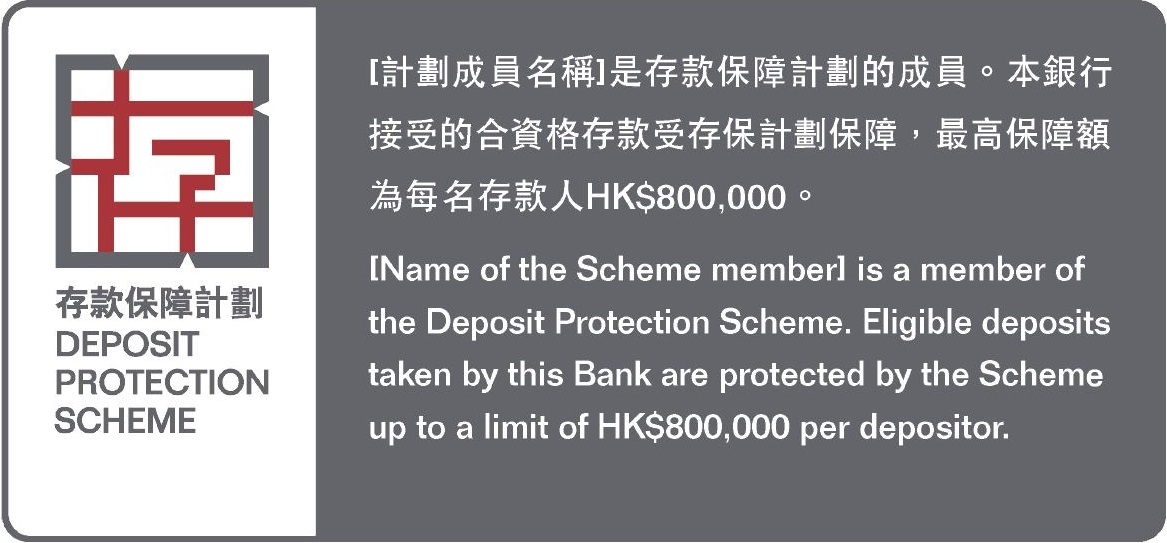
The Hong Kong Deposit Protection Board (the Board) is an independent statutory body formed under the Deposit
Protection Scheme Ordinance to oversee the operations of the Deposit Protection Scheme (DPS). The DPS protects your
deposits placed with Scheme members and the protection is statutory.
What is the DPS Coverage?
-
All deposits denominated in Hong Kong dollars, Renminbi or other currencies held with the Hong
Kong Offices of a Scheme member are protected. With effect from 1 October 2024, the protection limit has been increased to HK$800,000 per depositor per Scheme member.
-
- The following types of deposits are protected:
-
✓Conventional deposits placed with Scheme members (e.g. savings account
deposits, current account deposits and time deposits with a term not exceeding 5 years)
-
✓Deposits in personal, joint* and company accounts
-
✓Secured deposits
-
- *Holders of a joint account are deemed to have an equal share in the affected deposits
-
- The following types of deposits are not protected:
-
✗Offshore deposits (e.g. deposits placed with overseas / mainland China offices of a Scheme member)
-
✗Structured deposits (e.g. foreign currency linked
deposits and equity linked deposits)
-
✗Bearer instruments (e.g. bearer certificates of deposit)
-
✗Time deposits with a maturity longer than 5
years
-
✗Non-deposit products (e.g. bonds, stocks, warrants, mutual funds, unit trusts, insurance policies and virtual assets)
-
✗Stored value facilities
-
- No application is required as eligible deposits are automatically protected by the DPS. Depositors also do not need to pay for the
protection.
-
-
Other key features of the DPS
Who is a Scheme member of the DPS?
List of Scheme members --- All Scheme members (unless otherwise exempted by the Board) must
display the following membership sign at their places of business.

All Scheme members (unless otherwise exempted by the Board) must display the following simplified membership sign on their electronic banking platforms.
 More details on DPS Membership
How does the Scheme work?
More details on DPS Membership
How does the Scheme work?
Bank failure is rare in Hong Kong. In case a Scheme member fails and your deposits are eligible for
protection, the DPS will compensate you up to the protection limit of HK$800,000.
Want to know more?
Want to have peace of mind? Please find out more about the DPS from our
information leaflet and/or our
FAQ. Depositors can also check with their banks
on the protection status of their deposits.



